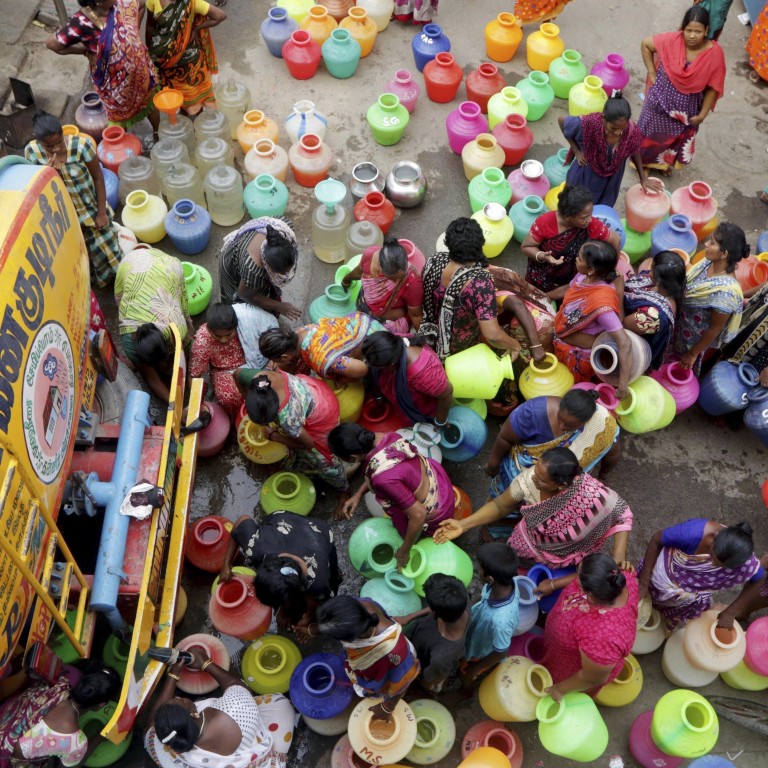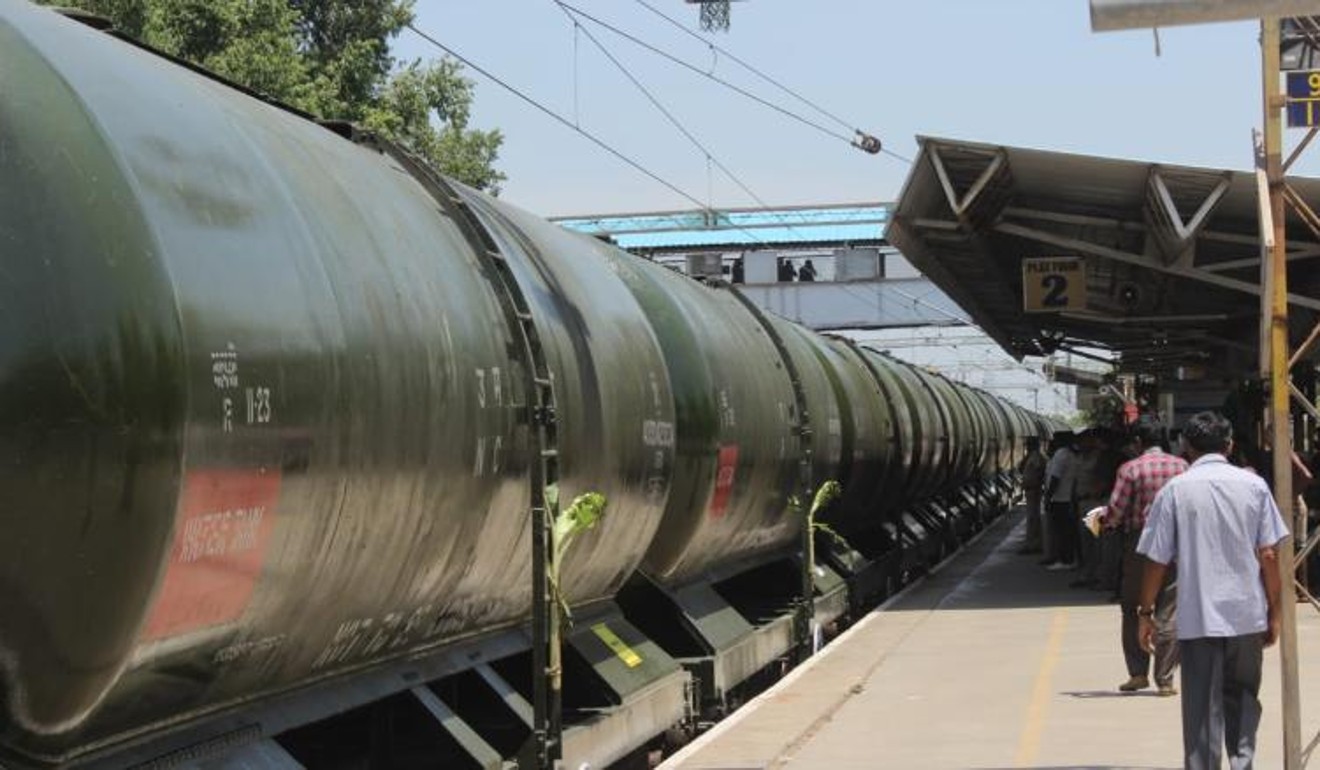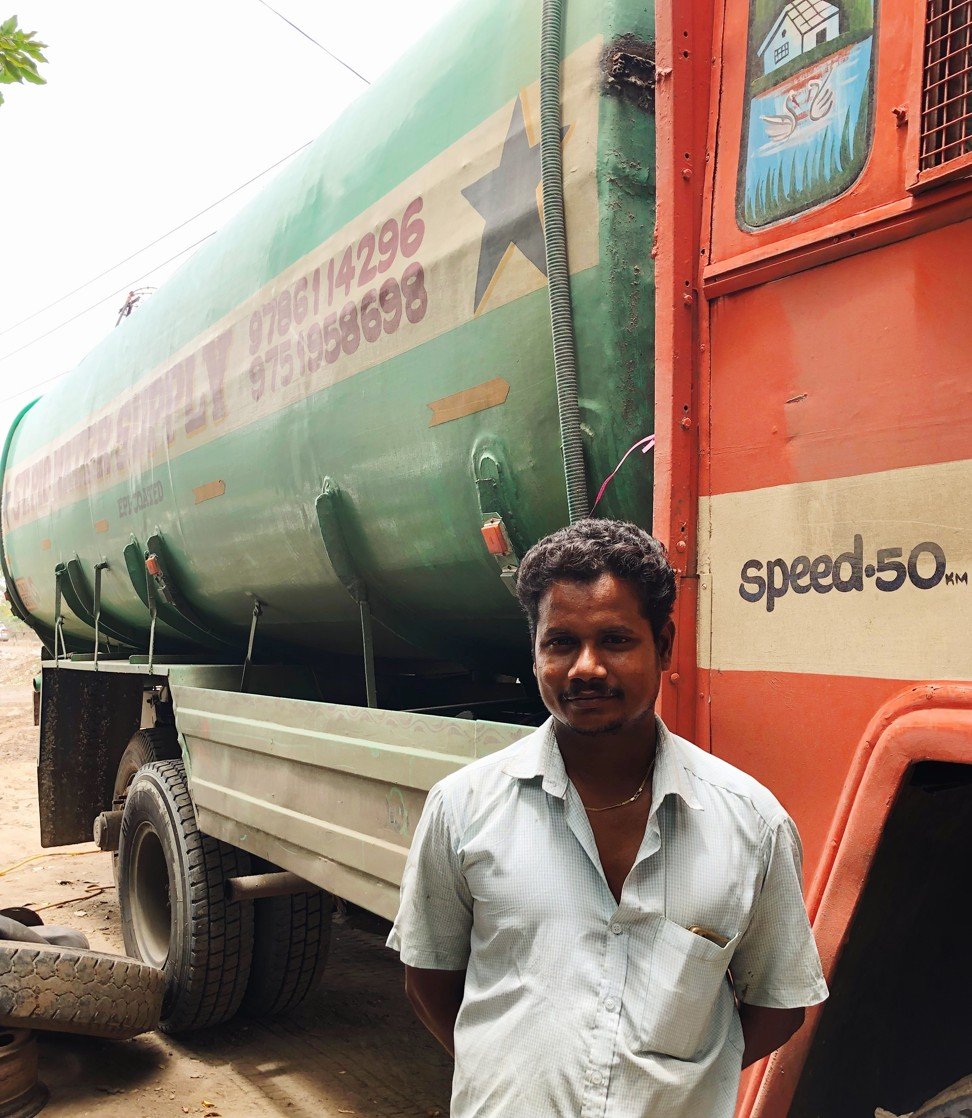
In drought-stricken Chennai, water is now more expensive than petrol
- Government think tank estimates 21 of the country’s cities will run out of groundwater by 2020
- The monsoon arrived later and weaker than usual this year, raising concerns these cities will be squeezed dry
Nearly four years ago, the south Indian city of Chennai, the capital of Tamil Nadu, was under water. The worst floods in living history – the result of cyclones from the Bay of Bengal – brought this manufacturing and services powerhouse of 11 million to a standstill as brackish water lapped at the wheels of the planes parked at the Anna International Airport. More than 500 people died and a further 1.8 million were displaced.
Today, the city is wracked by an unprecedented drought, enduring more than 200 days without rain. Chennai’s four main reservoirs are bone-dry and the Chembarambakkam lake is rapidly disappearing.
However, for Anbu, a 28-year-old truck driver, the drought has been a source of work. During the 2015 floods, he was forced to leave his village, Pavandhur, some 250km to Chennai’s south because it had – of all things – run out of water. Despite earning a diploma in ceramics, he had hoped to become a sugar cane farmer like his father.
“When there is water, it is a crop that really gives back,” he says.
At a highway truck repair station in Poonamallee on the outskirts of Chennai, Anbu proudly pats his brightly painted water truck. His job as a driver is a 24-hour commitment so the vehicle often doubles as his home. Every day, Anbu drives past the Chembarambakkam lake, which was once ringed by prosperous fishing villages. Now, he and his fellow drivers might be the only people who can prevent thousands of Chennai’s inhabitants dying of thirst.
Chennai workers told to shower less and hotels ration water as reservoirs dry up
Chembarambakkam was established some 900 years ago by the Chola kings. They created an intricate hydrological system of tanks, bunds and lakes that contributed to the region’s wealth. Indeed, it was the basis of the Chola’s littoral and maritime empire. In the past decade, however, these water resources have been severely tested as poor planning, corruption and incompetence have taken their toll.
Haphazard growth and illegal construction, often atop the city’s natural lakes, have severely damaged the environment, as well as the subregion’s delicate coastal ecosystem of mangroves and waterways.
Quarrying near the lake and a failure to dredge have exacerbated the situation.
Furthermore, the amount of water being piped into the city has fallen to less than 10 per cent of its original supply. Instead, three vast desalination plants are working overtime and the state government has been forced to transport water from further inland by train. These solutions – like the quarried water – are not sustainable.
Managing water resources is an ongoing challenge on the subcontinent. The NITI Aayog policy think tank estimates 21 of the country’s cities will run out of groundwater by 2020. The monsoon arrived later and weaker than usual this year, raising concerns these cities will be squeezed dry.

Little has been done to establish an all-India water management strategy, although the situation in states such as Andhra Pradesh is better than elsewhere. Canal and dam-building projects in neighbouring states such as Karnataka have further depleted Tamil Nadu’s supplies.
Chennai has become paralysed as water prices have skyrocketed. Anbu says a 20-litre can of drinking water which used to sell for 25-30 rupees (US 36-43 cents) now goes for 80-100 rupees. It means water is now more expensive than petrol, which sells for 76.18 rupees a litre.
We are in a situation where you have to do what you can to survive
The automobile factories have temporarily closed, leaving about 20,000 employees at risk of losing their jobs when they need them most. Many companies in Chennai’s IT corridor, which supports a further 20,000 jobs, have asked their employees to work from home. These offices were mostly served by trucks like Anbu’s but his prices have nearly doubled. Street vendors spend their nights searching for water for their homes and businesses.
Simultaneously, the north and northeastern states of Bihar and Assam are currently inundated by severe flooding, resulting in scores of deaths, underlining the sheer unpredictability of India’s weather, made worse by climate change arguably propelled by the country’s breakneck development.

Back in Chennai, though, the drought means more work for Anbu. Trucks like his collect water from villages around the city, travelling as far as 40km out. They fill their 24,000-litre tanks after paying farmers for water from wells or bores for as little as 700 rupees. The water is then sold in Chennai for more than 10,000 rupees.
As a driver, Anbu’s cut is small – just 15,000 rupees for 10 days’ work. However, it is a hefty sum in these parts. There are occupational hazards, though, including farmers protesting that trucks are “stealing” water from their villages. Violence sometimes flares.
“Luckily it has never happened to me,” Anbu says. “But often, truck drivers are attacked by villagers, the glass of the trucks are shattered with stones and the tyres are punctured.”
Many of his friends have had narrowly avoided confrontations with rural folk angry that precious water is being taken to serve Chennai’s city dwellers, who in the past showed scant concern for the farmers’ plight.
“I would never let a truck like mine even enter the perimeters of my village,” Anbu says. “I know what I am doing is wrong: but we are in a situation where you have to do what you can to survive. I am not apologising for that.”

